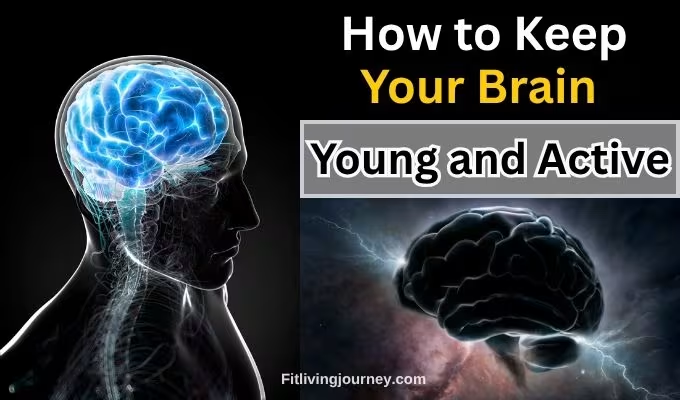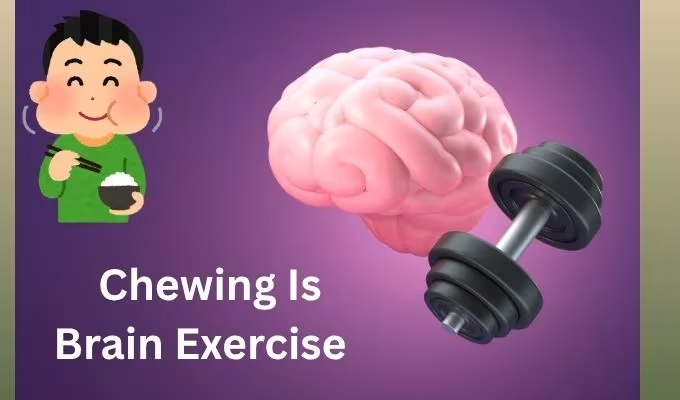Keep Your Brain Young and Active
Here is something that might surprise you. Did you know that after the age of 30, our brain starts shrinking?
Even researches show that we lose little of our brain volume with every passing decade.
Neuroplasticity: The Brain Is Not Cement
Fortunately, our brain is not rigid. It’s not like cement.
It’s neuroplastic, meaning it can change, adapt, form new connections, and even grow.
All we need is to give it the right stimulation with a little effort.
Start Simple: Build Balance
So how do we do that? Let me start with something very simple.
Balance Not just emotional balance, but actual physical balance.

When we try to balance on one leg, say in the Yogendra EkPadasan, or when we walk in a straight line with our eyes closed, it’s not just that our legs are doing the work.
Our brain has to stay alert, coordinate muscles, and maintain a correct posture.
Breathing and Brain Connection
And when we do pranayam like Anulom Vilom, you bring balance to both sides of the brain.
In fact, MRI scans have shown that slow, rhythmic breathing helps calming down the fear center in the brain and improves our ability to think flexibly.
Vision: A Window to Brain Stimulation
Now, speaking of stimulation, let’s talk about the eyes.
Do you know that a large portion of your brain is involved in processing what you see?
[ Why You Should Drink Raisin Water in the Morning ]
That’s why in yogic practices, we give a lot of importance to daily eye movements, clockwise and anticlockwise rotation, gentle palming, and of course, a powerful practice of Tratak, where you gaze steadily at the candle flame.
Tratak and Concentration
Research has also shown that practices like Tratak improve your concentration, visual memory, and even sleep.
And when your eyes are active, your mind stays sharp.
Mindful Chewing Is Brain Exercise
Now, let’s move to something that most people don’t associate with brain — that is chewing.
Not fast gulping, not swallowing half-eaten food, but mindful chewing.
It is found that chewing properly increases blood flow to the brain and boosts alertness.
Our traditional meals give enough chewing if we just slow down and use all our teeth.
Chewing and Memory
When you chew consciously, you stimulate the hippocampus — the part of the brain responsible for memory.
So next time when you are eating, remember: slow chewing is not laziness, but brain care.
Break Routine to Wake Up the Brain
And another wonderful way to keep your brain young is to change things a bit into your routine.
See, the brain is the creature of habits.
It loves patterns, but the more we repeat the same routines, the less we challenge it. So take a new road to the market.
Simple Changes Matter
Try writing with your non-dominant hand or rearrange the furniture in your room.
Even something simple as switching which leg you step out of the bed can wake up parts of your brain that have gone into hibernation.
Every time you do something unfamiliar, your brain uses new circuits.
Reading Aloud Lights Up Circuits
Speaking of circuits, here’s something I recommend. Read aloud, don’t just read in your mind.
When you read aloud, even if it’s just two lines of your newspaper, your brain lights up in more areas.
The movement of your lips, the sound entering your ear, the rhythm — it’s all very stimulating.
It sharpens pronunciation, improves memory, and keeps the mind alert.
Memory and Storytelling
Try reading your child or grandchild a story, or even chanting a morning prayer aloud. You will feel the difference.
While we are on the topic of memory, do make it a habit to memorize something every day.
It doesn’t have to be long or difficult.
Maybe a phone number, a poem, or even your train ticket number.
🌳 Nature Walks for a Younger Brain
Now I’ll tell you about the most beautiful and effortless way to keep your brain young.
Go for a walk in nature. Walk among trees, listen to birds, feel the soil, smell the leaves.
Walking for an hour or more in a natural setting reduces activity in the part of the brain associated with depression and increases your working memory.
🍃 Nature Brings Balance and Creativity
Pran flows more freely in an open space.
When you walk in nature, your brain enters a relaxed rhythm.
Creativity flows, emotional balance improves, and your thoughts become clearer.
Simple Habits That Nurture the Brain
Now, I’ll share with you a few simple things that you can start from today to keep your brain alert.
First, apply a little brahmi or bringraja oil to your skull once or twice a week.
It calms the nervous system. Press your fingertips and soles daily.
This stimulates the nerve endings linked to the brain.

😂 Laughter Is Brain’s Best Medicine
And whenever possible, you must laugh.
Laughter boosts dopamine, reduces stress, and keeps your mind young.
Watch a comedy, listen to a full story, or just laugh at your own self once in a while. It’s wonderful therapy.
Use It, Don’t Lose It
Remember, aging is not a problem. A dull brain isn’t natural.
It is just underused. So let’s use our mind like curious children.
Explore, balance, reside, chew, memorize, walk, play.
The more alive we keep our brain, the more effective our life would be.
FAQs
-
Why does the brain shrink after age 30?
Research shows we lose a little brain volume with each decade after 30, which is natural aging.
-
How does pranayam help the brain?
Practices like Anulom Vilom balance both brain hemispheres and calm the fear center, enhancing flexibility in thinking.
-
What is Tratak, and how does it affect the brain?
Tratak is focused candle-gazing that improves concentration, visual memory, and sleep.
-
Why is chewing important for brain health?
Mindful chewing increases blood flow to the brain and activates the hippocampus, enhancing memory and alertness.
-
How do nature walks benefit the brain?
Walking in nature lowers depression-linked brain activity, improves working memory, and boosts creativity.


